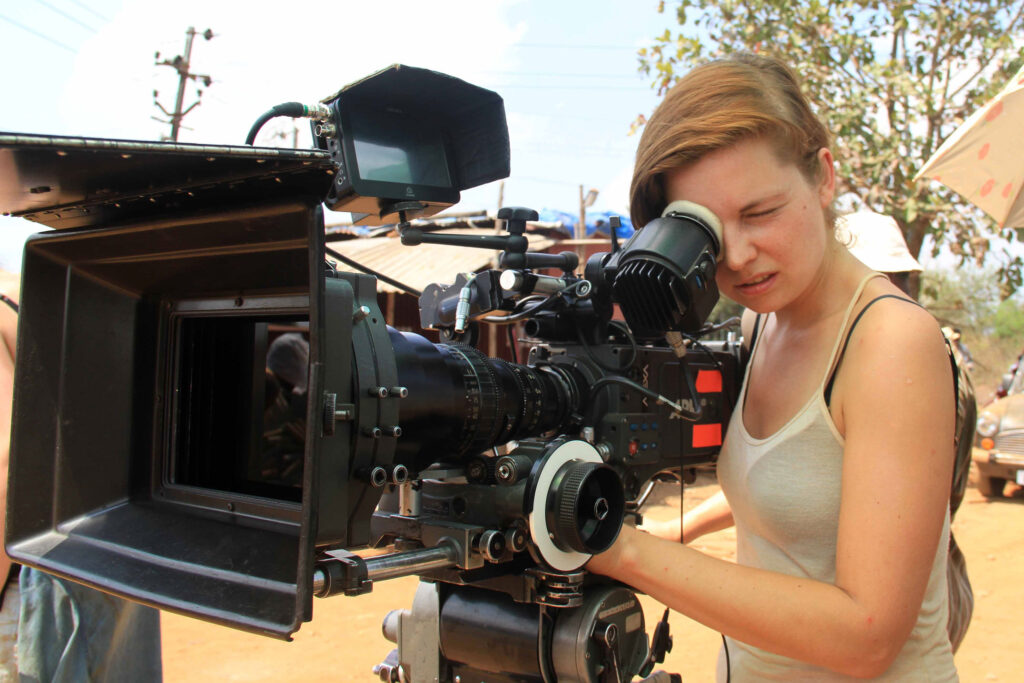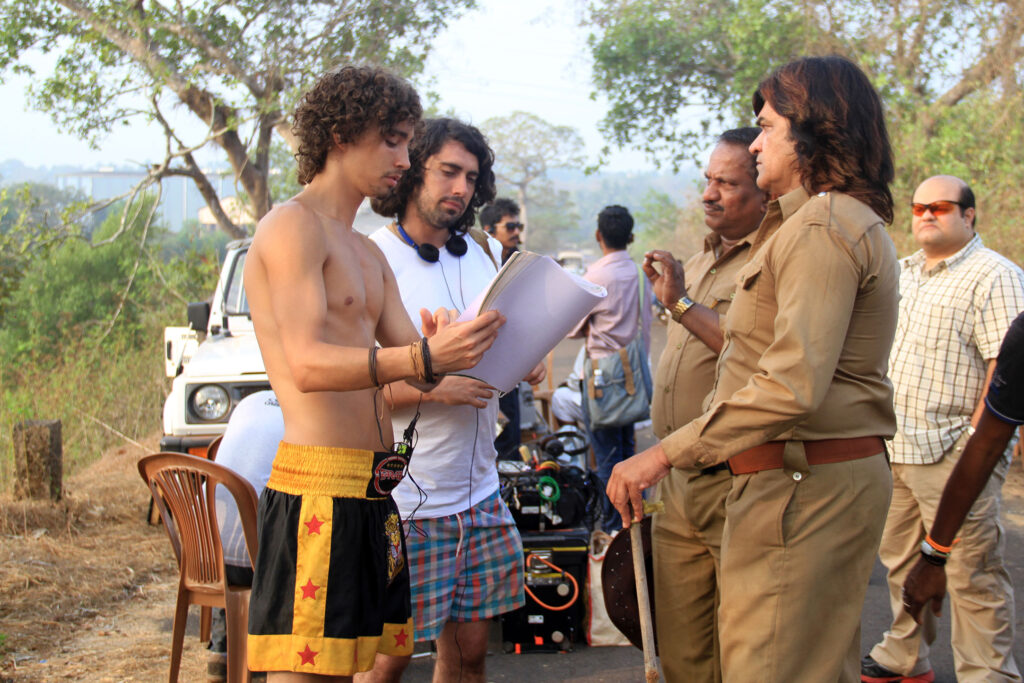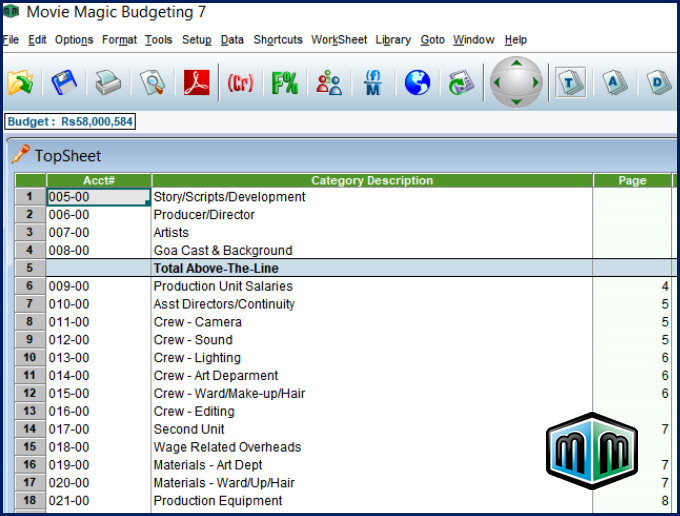Line Producer in India
If you're looking for a Line Producer in India you've come to the right place. We offer complete production management services in India. We can either work collaboratively alongside your team or handle everything for you.
Our local knowledge will prove incredibly valuable to you as you plan your production in India. Be sure to check out the tips for Line Producer's in India below and download our free guides, 'Permits & Paperwork in India', and our, 'Producer's Survival Guide to India'.
We often have clients send us a script, give us a budget, and then leave the rest up to us which is why you'll find we often get Producer or Line Producer credits rather than just Fixer credits. We use Movie Magic Scheduling and Budgeting to provide documents in a familiar format, to easily share files, and to effectively collaborate with our clients.
We care about our reputation as one of the best, most experienced Line Producers in India, and pride ourselves on attention to detail. Film production in India can be challenging but we have the experience and contacts to manage your project smoothly.
Tips for Line Producers in India....
Scheduling Tips:
India runs entirely on its own schedule. Things are habitually done at the last possible minute. This is especially true of government organisations and bureaucrats. It’s a good idea to ask your Line Producer in India to drive things forward and track progress regularly. Never assume that anything important is underway without evidence.
India has a bewildering array of festivals and public holidays some of which are national, state specific, or only celebrated
Travel
Seek local advice when working out travel times rather than using Google maps. Google has become more accurate over the years but there are so many factors that affect transport times in India that it’s best not to use Google to plan a precise schedule.
When booking your international flights don’t overlook the fact that India now has international flights to many regional airports and not just the major hubs of Delhi and Mumbai. You can fly in and out of the most convenient airports for your schedule. If you are using a Carnet make sure that your port of entry and port of exit can facilitate them. Full list of all Indian airports here… https://en.wikipedia.org/wiki/List_of_airports_in_India
Domestic Flight Times on Major Routes
Delhi (DEL) to Mumbai (BOM): 2hrs 10 mins
Goa (GOI) to Mumbai (BOM): 1hr
Mumbai (BOM) to Kolkata (CCU): 2hrs 45mins
Delhi (DEL) to Kolkata (CCU): 2hrs 10 mins
Chennai (MAA) to Delhi (DEL): 2hrs 55mins
Thiruvananthapuram (TRV) to Delhi (DEL): 3hrs 40mins – longest direct flight in India.
If moving equipment by air always book, and pay for, excess baggage in advance. This is easy to do online, saves money, saves time at the airport, and means that your baggage will most likely travel on the same flight as you.
Expect all modes of transport to be delayed during the monsoon if the wind and rain is particularly heavy. In winter airports in the North of the country are quite often affected by delays due to fog. This is particularly true of Delhi. If travelling at high altitude roads can become blocked by landslides during the monsoon and snow during the winter. Some roads that traverse mountain passes remain closed throughout the winter.
Unit Moves
Unit moves can take longer than expected when moving large trucks on minor roads. Power and telecom lines are often hung low overhead across roads and it’s sometimes necessary to have someone walk in front of vehicles pushing up cables with a long wooden pole to let your trucks pass. This means that your entire unit moves at walking pace part of the way unless you ensure all smaller vehicles move out from the previous location first. When considering a unit move in these circumstances always schedule the move in the early hours of the morning to avoid creating traffic chaos. You’ll need high powered flashlights to see the overhead cables at night.
Daylight Hours
India has a different range of daylight hours from North to South. If you’re moving around don’t get caught out by this. The variation can be as much as two hours. When working in the mountains usable light can occur later and finish sooner than published sunrise and sunset times if the sun must climb above high peaks in the morning or disappear behind them in the evening.
Midday light can be intense and extremely flat. For demanding scenes, many local DPs and Gaffers like to shoot wide at either end of the day and close in the middle of the day so that it’s easier to shape available light with modifiers.
Climate & Altitude
Don’t underestimate India’s climate. One of the common mistakes people from the Northern hemisphere make is to forget about the monsoon. They assume that the summer months of June to September will provide clear blue sky when in fact these months are marked by heavy rain throughout the country. The Indian summer precedes the monsoon from March to mid-June when it’s not uncommon for the temperature to rise to 40-48c with very high humidity in low lying areas. In the North winter mornings and evenings can be crisp and chilly on the plains and sub-zero in the mountains. Early morning visibility can be a problem on the Northern plains due to fog.
The great news is that outside the monsoon season, and occasional winter fog, you are practically guaranteed good light and no rain for eight months of the year.
When shooting at altitudes over 2,500m in the Himalayas don’t forget to build in sufficient acclimatisation time for your crew. Local labour, accustomed to the altitude, are worth their weight in gold to shift heavy equipment while you’re having trouble just walking around and breathing. Detailed useful information about Acute Mountain Sickness can be found here… http://goafilms.com/wp-content/uploads/2020/09/Acute-Mountain-Sickness-Prevention-Treatment.pdf
Budgeting Tips:
The first mistake most foreign Line Producers make is to assume that India is a cheap place to shoot. You get what you pay for just like anywhere else. If you want international standards to be maintained you can expect nearly international budgets. You can get rock bottom rates for most common line items, but you won’t have a good time working with these services and you’ll probably find that your savings have rapidly diminishing value. Some things are cheaper e.g. car rental, budget accommodation, meals in restaurants, some crew rates (especially manual workers), and equipment rental. But savings are often offset by expensive locations and large crew sizes. Your Line Producer in India will be able to help drive down costs using their extensive network of contacts.
Equipment & Crew

A camera kit comes with three assistants, lights can come with a ‘Lightboy’ each, a generator comes with a staff of three, all trucks have a staff of two, and a grip team is at least three or four. This will hit you especially hard if your locations are not in a city that has film infrastructure as all the crew will need to travel, stay in a hotel, be catered for, and have a per diem paid.
There are many situations when you’ll be pleased to have the extra crew on board. It’s often impossible to get close to where you want to shoot, because of narrow streets and intense traffic, so you’ll need people to carry equipment in and out. When it’s hot, or you’re working at altitude, extra bodies to divide manual labour are essential for an efficient schedule.
As well as crew travel, board, and lodging costs don’t forget to budget for equipment transport. This can be a significant expense if your locations are far from a city with film infrastructure and it’s necessary to transport heavy gear long distances by road.
For smaller documentary and TV shoots it often works out cheaper to bring in equipment and crew who will multi-task from your home country.
Locations
Locations can be expensive. I wouldn’t be surprised if Mumbai is one of the most expensive cities in the world to shoot in. Once you have paid municipal fees, police fees, other local authorities, and your local production team’s time to run from office to office acquiring the permits, you won’t get much change from $2,300 per location per day for a feature film shoot in the city. Thankfully, Mumbai is an exception but don’t underestimate how much locations and associated expenses will run to.
When shooting in busy public locations make sure you budget for adequate crowd control and security. It’s not unusual for film shoots to attract attention anywhere in the world but in India crowds can reach epic proportions.
If you need toilets for an outside location its worth considering hiring a double door vanity van instead. ‘Vanity Van’ is the term used to describe a converted coach used in place of a trailer/Winnebago etc. There aren’t really dedicated Honeywagons in India and each double door vanity van comes with two dressing rooms and two washrooms. They don’t cost a great deal more than two portable toilets to rent and you get two air-conditioned dressing rooms/offices into the bargain. You will need to pay for a genny to power them.
If you’re shooting with lights always budget for a genny as the power supply can be erratic in India. LED lights that run from the mains and batteries are great if you want to avoid the cost of a genny on smaller shoots.
Payments
A local Production Accountant or Line Producer in India who knows the complex Indian tax system is important to avoid nasty gotchas a few weeks into your schedule. They should know how to handle Goods & Services Tax, Tax Deducted at Source, Provident Fund, Import Duty, and all other taxes relevant to your production in India.
Despite recent government initiatives, to push the country towards digital payments, cash is still essential. Lots of cash. Don’t get caught short on days when you need to pay a lot of extras or crew per diems.
Insurance & Other Legal Requirements:
You should ensure that your Line Producer in India has experience of complying with the legal requirements laid out in your Production Services Agreement (PSA). Don’t present your PSA at the last minute. Send your boiler plate agreement early on in your negotiations to ensure that things like insurance, releases, and NDA’s aren’t overlooked.
Insurance
India is one of the most under insured countries on the planet. It’s unlikely that your Production Services Company or Fixer in India will have adequate annual Public Liability Insurance to satisfy the terms of your PSA. Insurance companies often express surprise
Intellectual Property
Releases for locations and appearance, along with cast and crew contracts, are not given a high priority in India. A good test of your Line Producer in India’s competence to handle international productions is to ask questions to ascertain their knowledge of these issues. You might even ask them to send examples from previous productions which, will not only reassure you that they have worked on international productions, but might also give you a good starting point when it comes to writing your own paperwork. Why reinvent the wheel?
Don’t forget to ensure that release forms, and area release signs, are available in the local language and script. This won’t always be English and Hindi as there are 23 official Indian languages. An ink pad is handy for thumb print ‘signatures’ on release forms in case of illiteracy.
Health & Safety
Health and safety was, until recently, given hardly any thought on Indian productions. Thankfully that's changing, but don't take it for granted that your Indian team will have the same standards as you in mind. Lay out your requirements very clearly, and communicate regularly, to ensure that nothing falls through the cracks. If your shoot involves stunts you should consider bringing a suitably stunt coordinator with you from your home country. You might have no choice as many insurance companies will not insure you for stunts if using an Indian supervisor.
Risk assessments are extremely rare in India but, with discussion and guidance, your Indian production team should be able to help you write one. If you find a Line Producer in India with the necessary experience to write one then you know you've found the right person for the job!
If you are shooting in India and plan to release the film here don’t forget to budget for Animal Welfare of India (AWI) clearances when shooting with animals. A film shot in India featuring animals cannot be theatrically released in India without AWI clearance.


